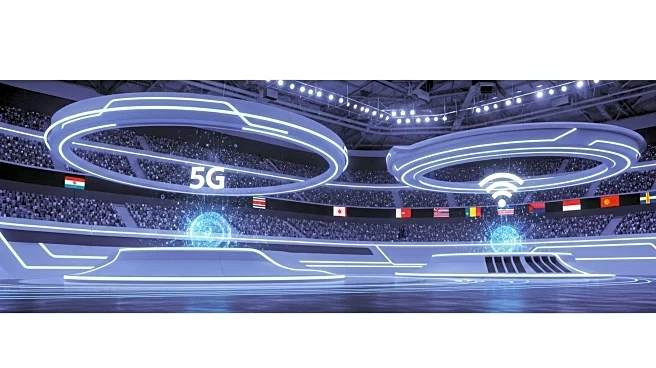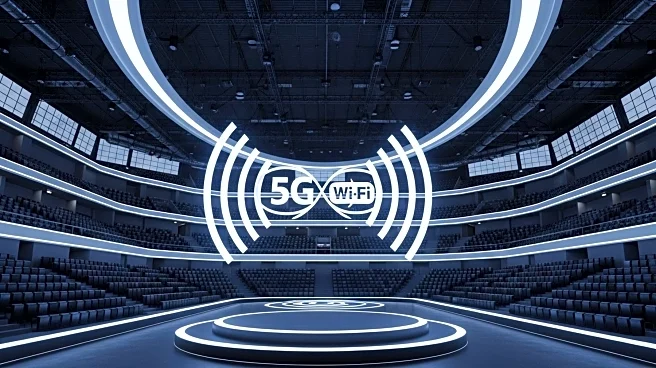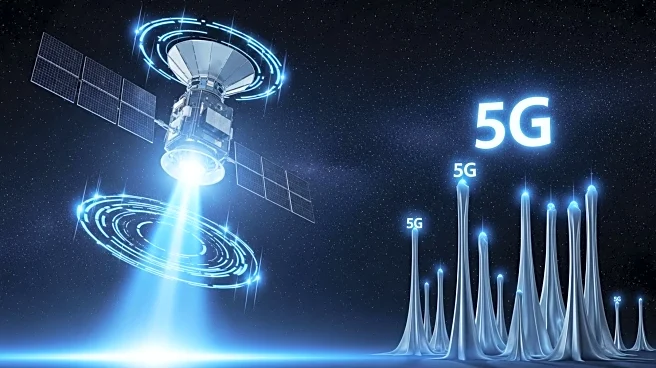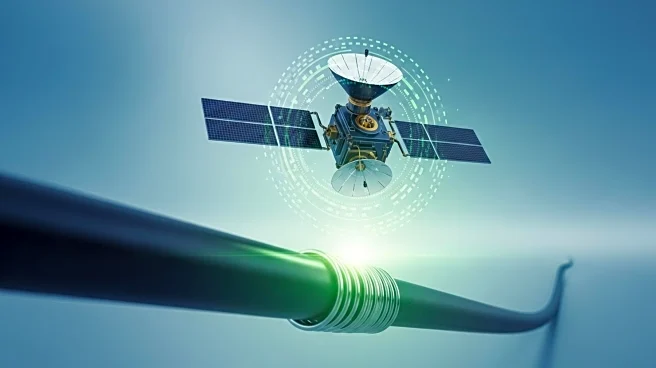What's Happening?
Comcast has unveiled the Xfinity Mobile Arena in Philadelphia, marking a significant advancement in media-telecom infrastructure. This venue integrates cutting-edge 5G and Wi-Fi technologies, offering high-speed internet access that is ten times faster than previous systems. The arena supports thousands of devices simultaneously, providing enhanced reliability and security for Xfinity Mobile customers. This initiative reduces reliance on costly MVNO agreements with Verizon by carrying 90% of Xfinity Mobile traffic over Wi-Fi. The arena also features private 5G networks powered by Nokia DAC, enabling real-time applications such as parking updates and high-quality video streaming.
Why It's Important?
The launch of the Xfinity Mobile Arena represents a strategic move by Comcast to future-proof its broadband business amidst growing competition from fixed wireless access providers like T-Mobile and Verizon. By integrating 5G and Wi-Fi, Comcast aims to enhance customer satisfaction and reduce churn, crucial as competitors continue to erode traditional broadband market share. The initiative aligns with Comcast's capital-light business model, optimizing costs while maximizing customer value. Financially, Comcast's Q2 2025 earnings report shows resilience, with a record addition of Xfinity Mobile lines despite losing broadband subscribers, indicating a shift towards mobile services.
What's Next?
Comcast's focus on infrastructure innovation is expected to drive further customer loyalty and shareholder returns. The company plans to scale similar solutions in residential and business markets, leveraging its AI-powered Smart Network Platform to optimize in-home Wi-Fi performance. Simplified pricing, bundled services, and infrastructure upgrades like DOCSIS 4.0 are anticipated to enhance Comcast's competitive positioning. Analysts suggest that Comcast's strategy of bundling wireless and broadband services could improve customer lifetime value significantly, positioning the company to dominate a market increasingly influenced by fixed wireless access.
Beyond the Headlines
Comcast's strategy highlights the importance of infrastructure as a strategic asset rather than a cost center. By creating a competitive moat through 5G/Wi-Fi convergence, Comcast differentiates itself from rivals, avoiding price wars despite intense competition. The company's ability to integrate these technologies while maintaining financial discipline positions it as a defensive growth play in the evolving media-telecom sector.












